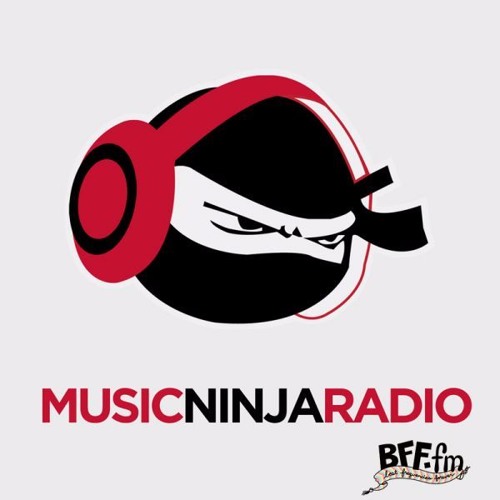
Sometimes an album catches you off guard, rising from nowhere and roaring into your ears with new sounds and ideas. Such an album grows on you over time, and eventually can reorient what music and sounds you thought you liked. Freeform Jazz, released on November 1 by Japanese producer and multi-instrumentalist Uyama Hiroto for Roph Recordings, is such an album. Emotionally rich, culturally diverse, and technically brilliant, it’s the artist’s third full-length release, his first since 2014’s Freedom of the Son, and it appeared with little to no fanfare or publicity in the United States.
Little information exists about Uyama Hiroto online, but he could first be heard playing the saxophone and clarinet in the music of deceased Japanese beat legend Nujabes, whose blend of jazz and hip hop was known for its technical precision, immaculate sampling, diversity of influence and melancholic vibe. Though Nujabes, real name Seba Jun, passed away in 2010, Uyama Hiroto has been driving forward the Japanese jazz/hip-hop sound and style, which itself has roots far deeper than Nujabes. Hiroto’s prior releases are excellent, but they don’t stray too far from Nujabes’ work. Now, high artistic risk pays off with a high reward on Freeform Jazz, which elevates his own sound and the Japanese jazz style to even higher ground.
The beautiful artwork on the album’s cover is representative of the musical elements which make the album so magical. First, like the painting, the music is rooted (although not exclusively) in prior Japanese musical tradition. Pentatonic scales and warm, emotive piano phrasing saturate the record, and recalls the work of 1970’s-1980’s jazz piano player Ryo Fukui. Constant melodies from the xylophone mix with the piano to establish a backdrop which sounds the way a Japanese maple garden looks in the autumn. This wash of colorful sound can be most clearly heard on “Yamato Damasii”.
The album’s cover has a certain liquidity to it, a fluid rearrangement of the traditional horseman image which looks as if it’s being reflected in water. Similarly, Hiroto filters his acoustic material ever so delicately, resulting in music which sometimes sounds like its being played in a glass of water. Listen to “Skipper” for that effect exemplified.
The horseman on the album’s cover also appears to be riding a mechanical steed with jets or generators on its flank. In the same vein, Hiroto uses digital software like Ableton to free traditional jazz music from its acoustic restraints, and filter and fit it into a more contemporary soundscape. Make no mistake, however. With such sultry horns, and crisp percussion and piano, this is a primarily acoustic album. Digital effects like precise panning, reverb, filtering, and vocal sampling are like the varnish or stain on a fine piece of furniture – they make an already strong product sparkle and shine.
“Into the Freedom”, the album’s first song and only solo piano piece, resonant and full of implied meaning, could be an allusion to the artist’s last record titled Freedom of the Son. This track descends into the next, “Yin and Yang”. A flute and then a saxophone spill out aching call-and-response melodies, an aural representation of the contrasting colors of the Yin Yang. “Yin and Yang” establishes an existential and quasi-spiritual tone for the rest of the record, which runs the gambit from pure emotional ecstasy, to absolute, guttural loneliness.
The next track, “Taiko”, like many others on the record, sounds like old bebop song with rapid, multidirectional percussion flooding the mid-level and disorienting the listener. Dramatic saxophone melodies meander above this din, which can reorient the listener if he or she buys into the musical ideas that Hiroto is supplying with his woodwinds and brass. Hiroto hits notes, particularly at the end of “Taiko” and “SolidScreme” , that screech, scream, squeal, and unequivocally communicate a feeling, not unlike John Coltrane on A Love Supreme, an artist and an album whose fingerprints are naturally all over Freeform Jazz. These scat songs of Hiroto’s also resemble the music of Coltrane’s grand-nephew Flying Lotus, particular in the percussion’s timbre and style. The same artistic risk and reversion to roots that FlyLo initiated with You’re Dead! is at play on Freeform Jazz.
“Unconscious” hits one of the record’s high points, a crescendo built up to by meticulously melodic guitar plucking, rising and falling keyboard melodies, and that same driving percussion. Adept record scratching is another element inside Mr. Hiroto’s tool bag, and he breaks it out with flair on this track.
“Fools no Rules”, featuring Roph Recordings label mate Segawa Tatsuya, comes off as improvised madness verging on sensory overload, with pounding keys, screeching sax, and aggressive rhythmic Japanese speech.
It’s a low ebb for the album – melody and meaning have almost completely decomposed and from this rises “Waltz For Real World”. Hiroto features a waltz on each of his three albums. The first two, charmingly named “Waltz for Life” and “Waltz for Life – Song For Children”, are long, traditional, swaying songs full of colorful, pleasurable tones, and dependent on a highly-communicative melody in the vein of Coltrane’s seminal jazz classic “My Favorite Things”. “Waltz for Real World” departs from this pattern. It’s short, melodically muddled, and punctuated by a shrill, desperate saxophone crying out for life, for love, for contact or for closure – it’s a song written for the real world, where life can be desperate and sad as often as it is purpose-driven and fun.
The record rallies with the brief but kinetic and quick “Departure”, which comes on the heals of a rap number titled “Southside” featuring Shing02, the Japanese rapper (rapping in English) with whom Nujabes is considered to have created his best work, the “Luv(Sic)” series.
“Posse”, again featuring the producer Segawa Tatsuya, could be an homage to the Nujabes song “Letter From Yokosuka”, which has the same cadence and almost exactly the same root piano melody. Hiroto’s rendition ratchets up the suspense and improvisation, however, building with softly-blown saxophone phrases that come to a powerful and assertive climax before fading into silence. If a picture is worth 1,000 words, then a phrase from Hiroto’s horn is worth at least 500.
“Minano Pride”, the final cut on the album, appropriately winds down the vibe as a slow, striding ballad based on a rudimentary drum beat, a lilting bassline, the shifting and shimmering keys and xylophone combo which is Hiroto’s signature, and a saxophone melody that plays like a leaf falls, blowing side to side as it descends.
Jazz both cultivates and reflects a mood. Whereas for example Coltrane’s sound reflected the manic scuffle and sense of possibility of urban Black America post-Great Migration, and Flying Lotus represents sonically on You’re Dead a contemporary existential crisis experienced by many African Americans, Uyama Hiroto’s jazz represents the serene, but striving lifestyle among the artist and his cohorts in Japan, highlighted by views of the ocean and mountains, surfing sessions, and simple pleasures like “coffee and bread” as Shing02 says.
If Uyama Hiroto’s music never garners the same internet cult following which surrounds Nujabes’ music, it may be all the better. The artist seems to make music to express his own inner prides and passions, and not to start a revolution of style, or stir the hearts of millions. Nonetheless, Hiroto’s Freeform Jazz inovates, excites, and exemplifies the magic that can happen when styles, cultures, and technologies blend through music in just the right proportion.















